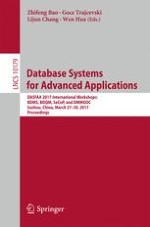This book constitutes the workshop proceedings of the 22nd International Conference on Database Systems for Advanced Applications, DASFAA 2017, held in Suzhou, China, in March 2017. The 32 full papers and 5 short papers presented were carefully selected and reviewed from 43 submissions to the four following workshops: the 4th International Workshop on Big Data Management and Service, BDMS 2017; the Second International Workshop on Big Data Quality Management, BDQM 2017; the 4th International Workshop on Semantic Computing and Personalization, SeCoP 2017; and the First International Workshop on Data Management and Mining on MOOCs, DMMOOC 2017.
